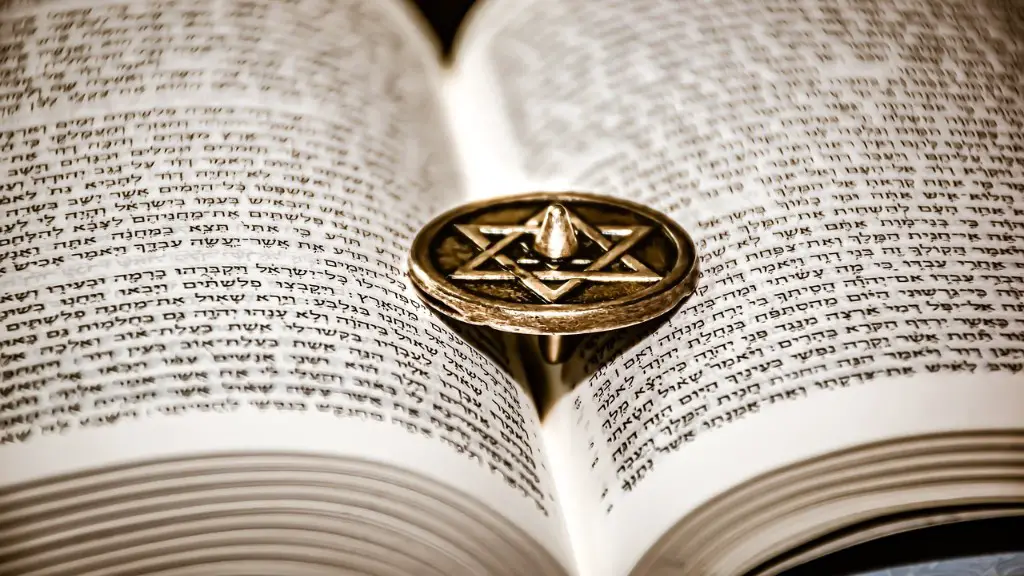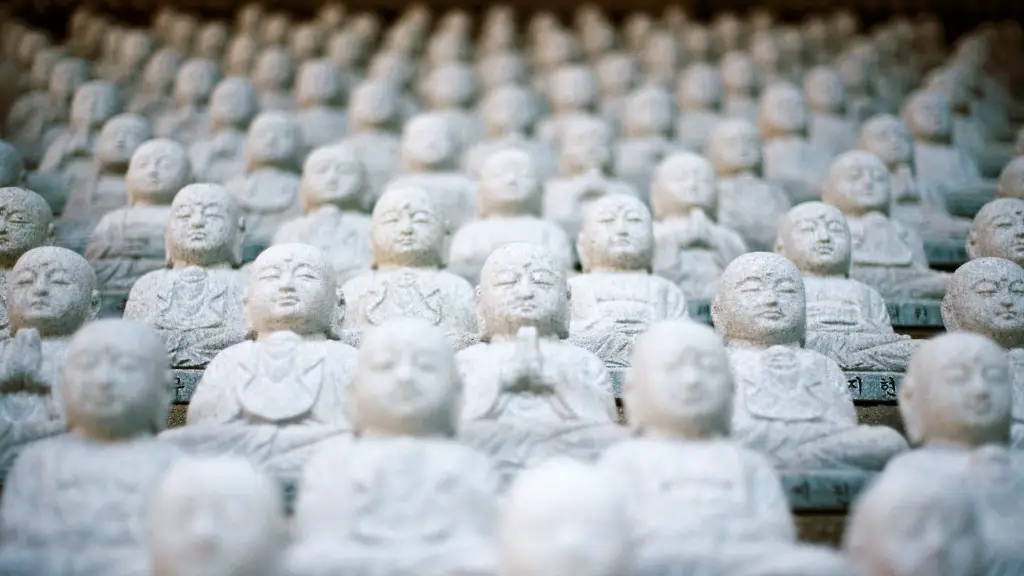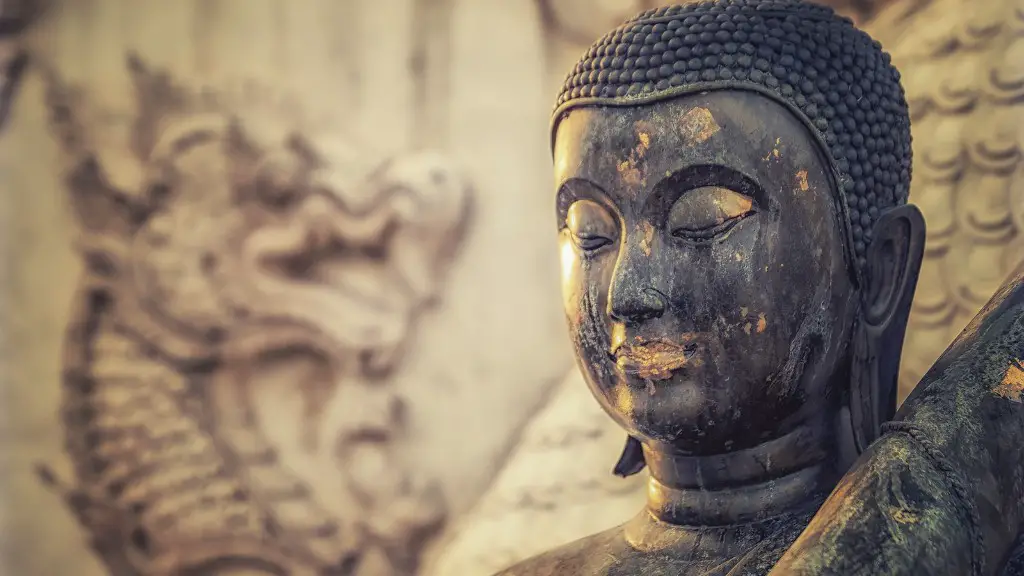Hinduism is an ancient religion with a rich culture and traditions. It has a long history dating back thousands of years. It has been an integral part of the culture of India as well as other countries like Singapore and Thailand. One of the most prominent concepts of Hinduism is its understanding of time which is known as Yugas. Consequently, this article aims to define what Yugas are and to explore the importance and structure of each Yuga.
As Tamil poet Tiruvalluvar wrote in the Tirukurral: “Yugas keep changing, ages come and go in cycles; life follows the precept of alternating death and rebirth”. This reflects on the Hindu belief in the cycle of time, which flows in four Yugas – Krita Yuga, Treta Yuga, Dwapara Yuga and Kali Yuga. Each Yuga is further divided into four Yugas, each representing 12,000 years of the Hindu calendar.
The Krita Yuga is the first of the four Yugas and is known as the “Golden Age” or “Age of Truth”. This Yuga is characterized by virtue, wisdom, peace and prosperity, and is said to be the most ideal state of human civilization. Human life is said to have been perfect and most people experienced enlightenment. This Yuga is said to have lasted for 4,800 years.
The next Yuga is Treta Yuga, known as the “Silver Age”, a period of deceit and untruth. In this era, humans were much less virtuous and enlightenment was harder to attain. This Yuga is said to have lasted for 3,600 years.
The third Yuga is the Dwapara Yuga, the “Bronze Age”, a period of transition between the two previous Yugas. This Yuga is said to have lasted for 2,400 years. During this Yuga, worship of idols and temples began to become more popular and spiritual knowledge was starting to decline. People were more materialistic and took fewer spiritual paths.
The fourth Yuga is the Kali Yuga, the “Iron Age”. This is the current Yuga, and it is characterised by a spiritual decay; truth and virtue have diminished significantly. During this period, people are more focussed on gaining material wealth and not on finding spiritual enlightenment. This Yuga is said to have began 5,200 years ago and is believed to last until the end of the world. In total, it will have lasted for a total of 12,000 years.
Importance of Yugas in Hinduism
The four Yugas are a fundamental concept to the Hindu faith and Hinduism places great importance the yugas cycle. All four phases are believed to represent different periods of time. For example, the Kali Yuga is seen as symbolising the darkness and decline of human life before the dawn of the Satya Yuga, or the “Golden Age”. It is believed that this cycle of the four Yugas will then repeat four times. In Hinduism, the Yugas are believed to have a profound effect on the lives of humans.
In Hinduism, the concept of Yugas is linked to the idea of reincarnation. Hindus believe that every human is born into one of the four Yugas and as such each Yuga is linked to a particular quality or attribute. People who are born in the divine Yugas of Krita and Treta are believed to be highly creative and inventive, while those born in the iron age of the Kali Yuga are seen as far more materialistic. Therefore, the cycle of the four Yugas can be seen as a representation of the spiritual evolution of mankind.
The cycle of the yugas is also linked to Hindu astrology, known as Jyotish. This is the study of planetary movements and their astrological influences upon us. According to astrologers, the four Yugas have a cyclical effect on our lives, as different planets signify different Yugas. Knowing which Yuga you are born into can provide insights into your character and destiny.
Structure of Yugas in Hinduism
The Yugas cycle is determined by the Vedas, which are the ancient Hindu scriptures. The cycle is said to have been specified in the Bhagavata Purana, which describes the four Yugas as follows: Krita lasts for 4,800 years, Treta for 3,600 years, Dwapara for 2,400 years, and Kali for 1,200 years. This corresponds to a grand cycle of 12,000 years. After 12,000 years, the cycle starts again with the Krita Yuga.
An important part of the Yugas structure is the Maha Yuga, or great yuga. This is a period consisting of four yugas, or 12,000 years. At the end of each Maha Yuga, a drastic world event or a cataclysmic destruction takes place, according to Hindu beliefs. This event is known as Pralaya and it is believed to reset the cycle and brings the world back to its beginning.
Within each Maha Yuga, there are other cycles and sub-cycles. For example, within each cycle of four Yugas, there is what is known as a Chaturyugi. This is made up of four distinct ages, each lasting 3,000 years. A Chaturyugi is then followed by a Manvantara, a period of renewal lasting 71 Chaturyugis. After a Manvantara comes a Kalpa, a period of 8,640,000 years.
Relations Between Each Yuga in Hinduism
Each of the four Yugas is said to have a positive and negative influence on human life. For example, some believe that the Krita Yuga was a perfect time for individuals to be creative and live harmoniously in the world. On the other hand, the Treta Yuga was a period of moral and spiritual decline, when the vices of passion, greed and power began to take over. Similarly, the Dwapara Yuga saw an increase of materialism and idol-worship, while the Kali Yuga brought a spiritual darkness and a reliance on physical goods.
Despite the contrast between each Yuga, each also has an important relationship. It is believed that each exodus, or transition between Yugas, is marked by the bringing down of a certain quality. For example, the transition from the Krita Yuga to the Treta Yuga is referred to as the “deterioration” of Dharma, or virtue. Similarly, the transition from the Treta to the Dwapara Yuga is referred to as the “deterioration” of Yajna, or sacrifices. Each of these dwindling qualities is then reversed in the consecutive Yuga, in what is known as the “regeneration” of Dharma or Yajna.
Reincarnation and Connection with Yugas in Hinduism
The concept of reincarnation is closely linked to the concept of Yuga in Hinduism. Hindus believe that each Yuga is associated with a particular quality, and so everyone is reborn into a particular Yuga. In the Krita Yuga, individuals are seen as more spiritual and harmonious, while in the Kali Yuga, individuals are more materialistic and selfish. Therefore, it is believed that the Yuga in which you are born is a reflection of your spiritual evolution.
Reincarnation is also thought to be affected by the energies of the Yugas. In the Krita Yuga, when the world was in a state of enlightened bliss, it was much easier to reach Satya or Nirvana. Conversely, in the Kali Yuga, where the world is in a state of spiritual darkness, it is much harder to attain a higher level of spiritual progress. Therefore, according to Hindu beliefs, it is important to be aware of which Yuga you are born into, as this can have an impact on your spiritual growth.
Hindu Gods and Yugas in Hinduism
The four Yugas are also closely linked to Hindu Gods. The Krita Yuga is associated with Brahma, the creator, Treta with Vishnu, the preserver, Dwapara with Maheshwar, the destroyer, and Kali with Shiva, the transformer. This implies that Hindu Gods help humanity evolve spiritually through the cycle of the Yugas. Each God is believed to represent the qualities of the Yuga in which he exists, so that when an individual is in the Krita Yuga, Brahma is the leader who encourages creativity and enlightenment.
Another important relationship between the Gods and the Yugas is that each God is believed to bring about a change in the Yuga. For example, Vishnu is believed to bring about the Treta Yuga, in which Yajna (sacrifice) was necessary, or Shiva is believed to transform the Kali Yuga and inspire mankind to move towards the Satya Yuga. In this way, the Gods are seen to be involved in the cycle of the Yugas.
Conclusion of the Yugas in Hinduism
Yugas play an important role in Hindu culture and beliefs. The four Yugas represent different periods in time and in the lives of humans and it is believed that each Yuga symbolises a particular stage in our spiritual evolution. Furthermore, the concept of Yugas is closely linked to the idea of reincarnation and to the Gods, who are believed to help humanity pass through the different phases of the cycle.


